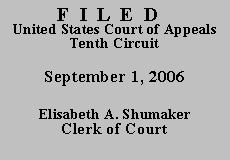

On September 26, 2005, Mr. Chavez filed his second amended complaint. This amended complaint named additional parties as defendants and asserted several new claims. It is the longest of his three complaints, typed in small font and comprising 26 single-spaced pages, 16 of which describe the nature of the case and its eight claims. Finding that the second amended pleading suffered essentially the same flaws as the first amended pleading, the district court, on November 29, 2005, dismissed the action without prejudice.(1)
We affirm. Rule 8 of the Federal Rules of Civil Procedure requires that the parties make only "a short and plain statement of the claim showing that the pleader is entitled to relief." Fed. R. Civ. P. 8(a)(2) (emphasis added). "[A]ll that is necessary is that the claim for relief be stated with brevity, conciseness, and clarity, a standard articulated many times over by federal courts throughout the country." 5 Charles Alan Wright & Arthur R. Miller, Federal Practice and Procedure § 1215, at 165 (3d ed. 2004). This Court has upheld such a standard of brevity and clarity in pleadings. See Blazer v. Black, 196 F.2d 139, 144 (10th Cir. 1952) ("[T]he only permissible pleading is a short and plain statement of the claim showing that the pleader is entitled to relief on any legally sustainable grounds."); Knox v. First Sec. Bank of Utah, 196 F.2d 112, 117 (10th Cir. 1952) ("The purpose of [Rule 8] is to eliminate prolixity in pleading and to achieve brevity, simplicity, and clarity."). A Rule 8 pleading is not the proper place for the plaintiff to plead all of the evidence or to fully argue the claims. Swierkiewicz v. Sorema N.A., 534 U.S. 506, 512-513 (2002).
In addition to being short and concise, a pleading must be specific enough to "give the defendant fair notice of what the plaintiff's claim is and the ground upon which it rests." Conley v. Gibson, 355 U.S. 41, 47 (1957). We admit that it is not the easiest balancing for the pro se litigant both to be brief and to provide fair notice to the defendants. Consequently, we give pro se litigants greater leeway such that their pleadings "are to be construed liberally and held to a less stringent standard than formal pleadings drafted by lawyers." Hall v. Bellmon, 935 F.2d 1106, 1110 (10th Cir. 1991). However, the court is not the pro se litigant's advocate. Id. It is not the role of the court to sort through a lengthy complaint to construct the plaintiff's case. See Glenn v. First Nat'l Bank in Grand Junction, 868 F.2d 368, 371-72 (10th Cir. 1989). We agree with the district court that Mr. Chavez's 26 page single-spaced second amended complaint failed to meet the "short and plain" requirements of Rule 8(a), even given a liberal construction.
The district court dismissed the plaintiff's complaints without prejudice. Mr. Chavez is free to refile his case in compliance with this ruling and that of the district court below. If he does choose to refile, we advise him to carefully follow the advice he received from the district court. In particular, a new "short and plain" pleading should, in part, (1) briefly state the relevant facts for each claim and party, (2) explain exactly which parties he is suing on each claim, and (3) clearly show how he exhausted the grievance process for each defendant sued under each claim. It should be possible for Mr. Chavez to do all this in much less space, and with much greater clarity, than he did in his first two amended complaints.
The judgment of the United States District Court for the District of Colorado is AFFIRMED and the appeal is DISMISSED. Appellant's motion to proceed in forma pauperis is also DENIED.
Entered for the Court,
Michael W. McConnell
Circuit Judge
*.After examining the briefs and appellate record, this panel has determined unanimously that oral argument would not materially assist in the determination of this appeal. See Fed. R. App. P. 34(a)(2); 10th Cir. R. 34.1(G). This case is therefore submitted without oral argument. This order and judgment is not binding precedent, except under the doctrines of law of the case, res judicata, and collateral estoppel. The court generally disfavors the citation of orders and judgments; nevertheless, an order and judgment may be cited under the terms and conditions of 10th Cir. R. 36.3.
1.Although the dismissal was without prejudice, we have jurisdiction under 28 U.S.C. § 1291 because the district court dismissed the action, not merely the complaint. See Budde v. Ling-Temco-Vought, Inc., 511 F.2d 1033, 1036 (10th Cir. 1975) (explaining that although a dismissal of an action without prejudice is a final and appealable order, dismissal of a complaint without prejudice is non-appealable). In its order of dismissal the district court stated that both "the second amended complaint and the action are dismissed without prejudice." R. Doc 36 at 7. Because this statement unambiguously dismisses the action, the district court's order was final and appealable.
Moreover, it appears that Mr. Chavez is no longer in custody, which renders his claim for declaratory relief moot. Because he seeks monetary damages, however, the remainder of the case continues to present a live case or controversy.